A special exhibit at the Northwest Museum of Arts and Culture in Spokane, Washington, featured The Inuit Art of Povungnituk. Povungnituk is a village on the eastern shores of Hudson Bay in Arctic Quebec. A portion of this exhibit was dedicated to the Povungnituk Print Shop.
 The Northwest Museum of Arts and Culture
The Northwest Museum of Arts and Culture
Following World War II, a printmaking movement developed among the artists in the indigenous communities of the Arctic. The contemporary Inuit art industry is generally dated to 1948 when artist James Houston traveled to Inukjuak on a painting trip and acquired 20 Inuit souvenirs. As a result of this trip, he made arrangements to market Inuit carvings in the south and to encourage carving production. Ten years later, artist James Houston initiated printmaking by Inuit artists. The idea for printmaking came to Houston when he was attempting to explain how designs were printed on cigarette packages. To demonstrate the idea of printing, he rubbed ink into the designs created by the carver Oshaweetok on a 15inch piece of walrus tusk. He then pressed the tusk again a tissue. Oshaweetok looks at the image and said: “we could do that.”
The idea of a cooperative originated through the efforts of P. Myrdock, the former manager of the Hudson’s Bay Company in the village. He convinced the local carvers to form a carvers’ society which incorporated in 1958. This led to the formation of the Povungituk Cooperative in 1960.
In 1961, the Povungnituk Print Shop was established as a part of the Povungituk Cooperative. According to the display:
“Reflecting the harsh realities of Arctic life and the mystery of legends and myths, Povengnituk work has been described as unselfconscious and honest. Their remote location may have shielded Povungnituk printmakers from mainstream influences, preserving their unique style.”
The print shop closed in 1989 following the death of several prominent artists.
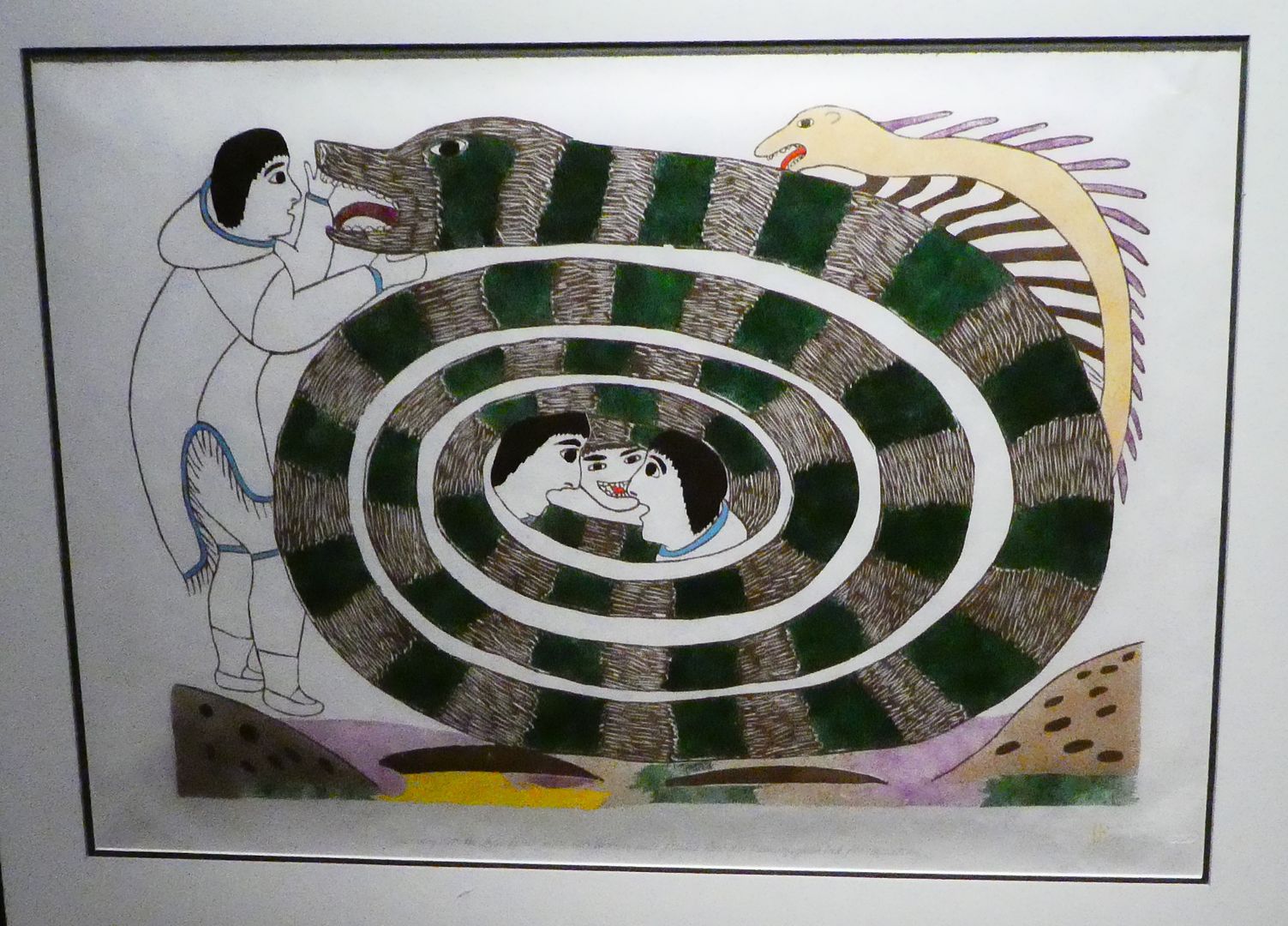 Shown above is Conversing with the Snake Spirit by Victoria Mamnguqsualuk (1930-2016).
Shown above is Conversing with the Snake Spirit by Victoria Mamnguqsualuk (1930-2016).
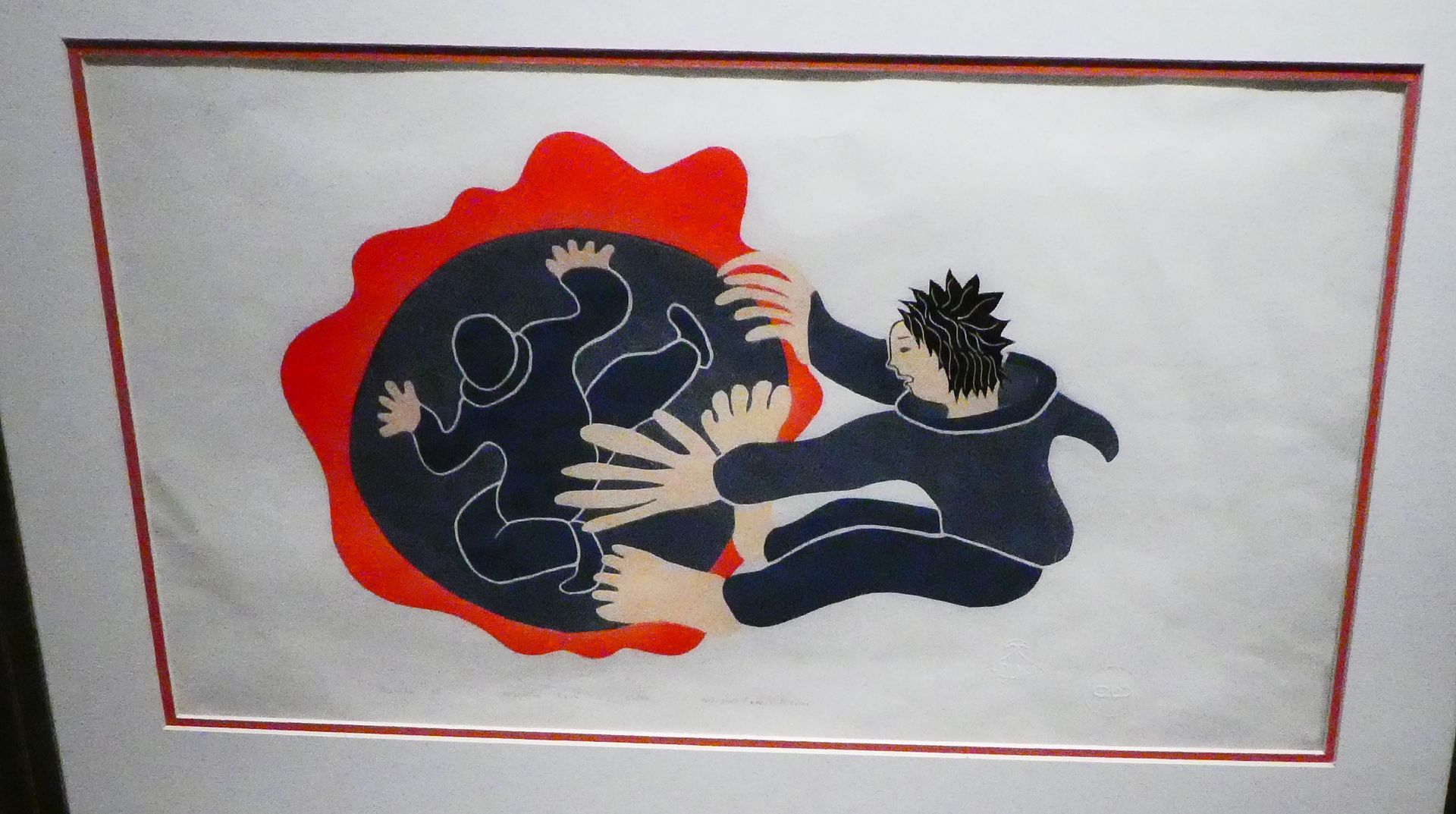 Shown above is Reaching Back by Vera Hatogina.
Shown above is Reaching Back by Vera Hatogina.
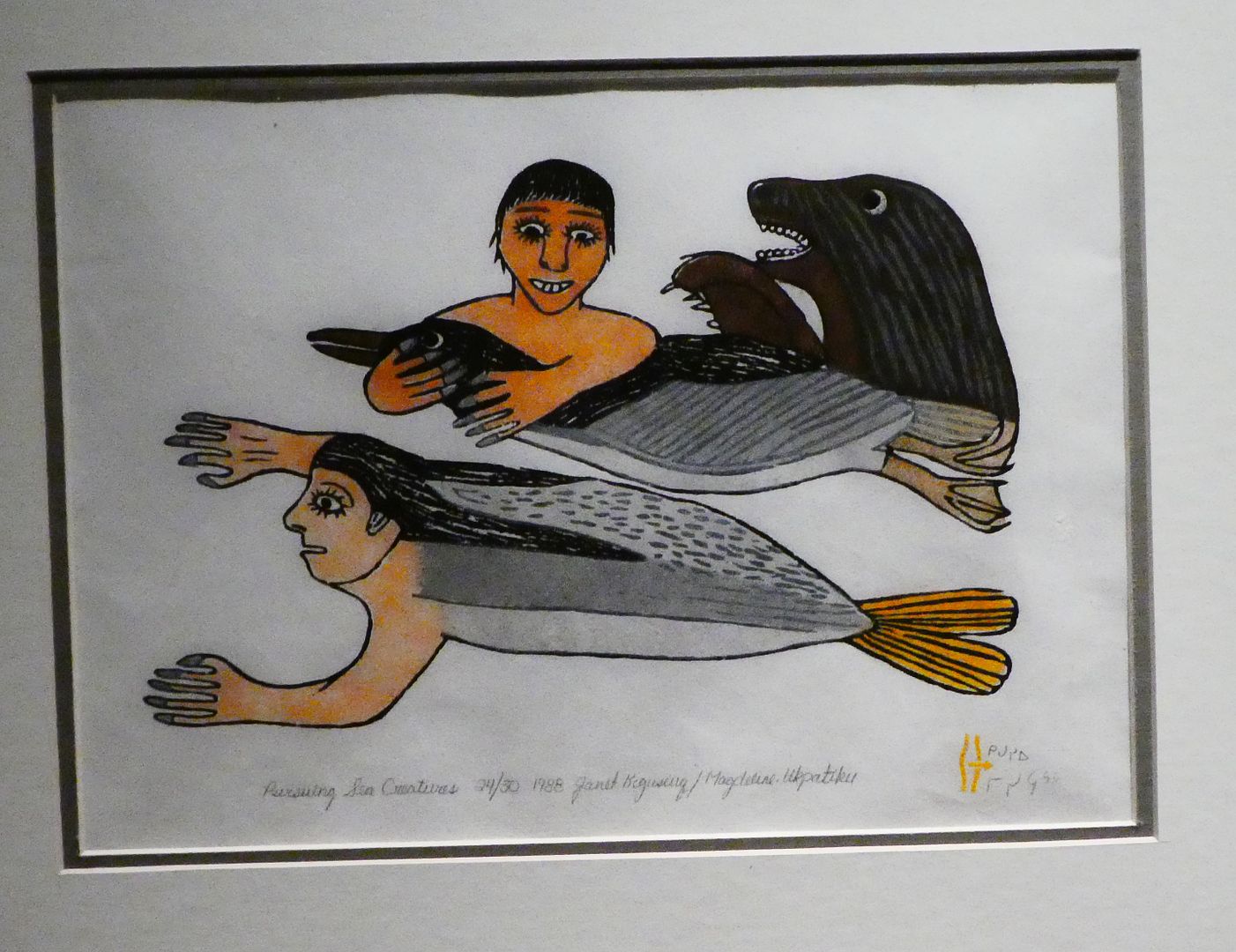 Shown above is Pursuing Sea Creatures by Janet Kigusiuq (1926-2005)
Shown above is Pursuing Sea Creatures by Janet Kigusiuq (1926-2005)
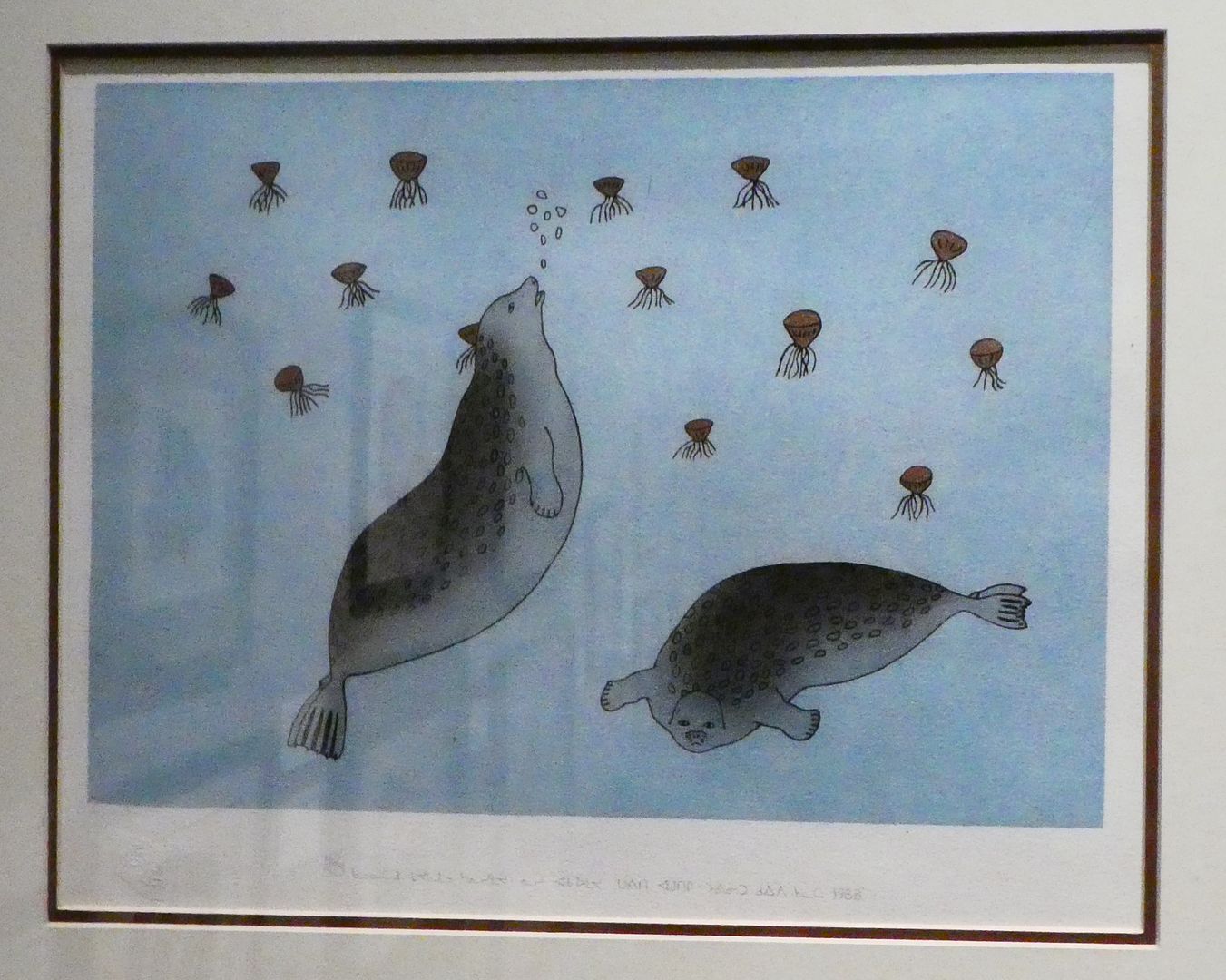 Shown above is Seals Underwater by Davidee Angutigirk and Mary Qumaluk in 1988 with serigraph and stencil.
Shown above is Seals Underwater by Davidee Angutigirk and Mary Qumaluk in 1988 with serigraph and stencil.
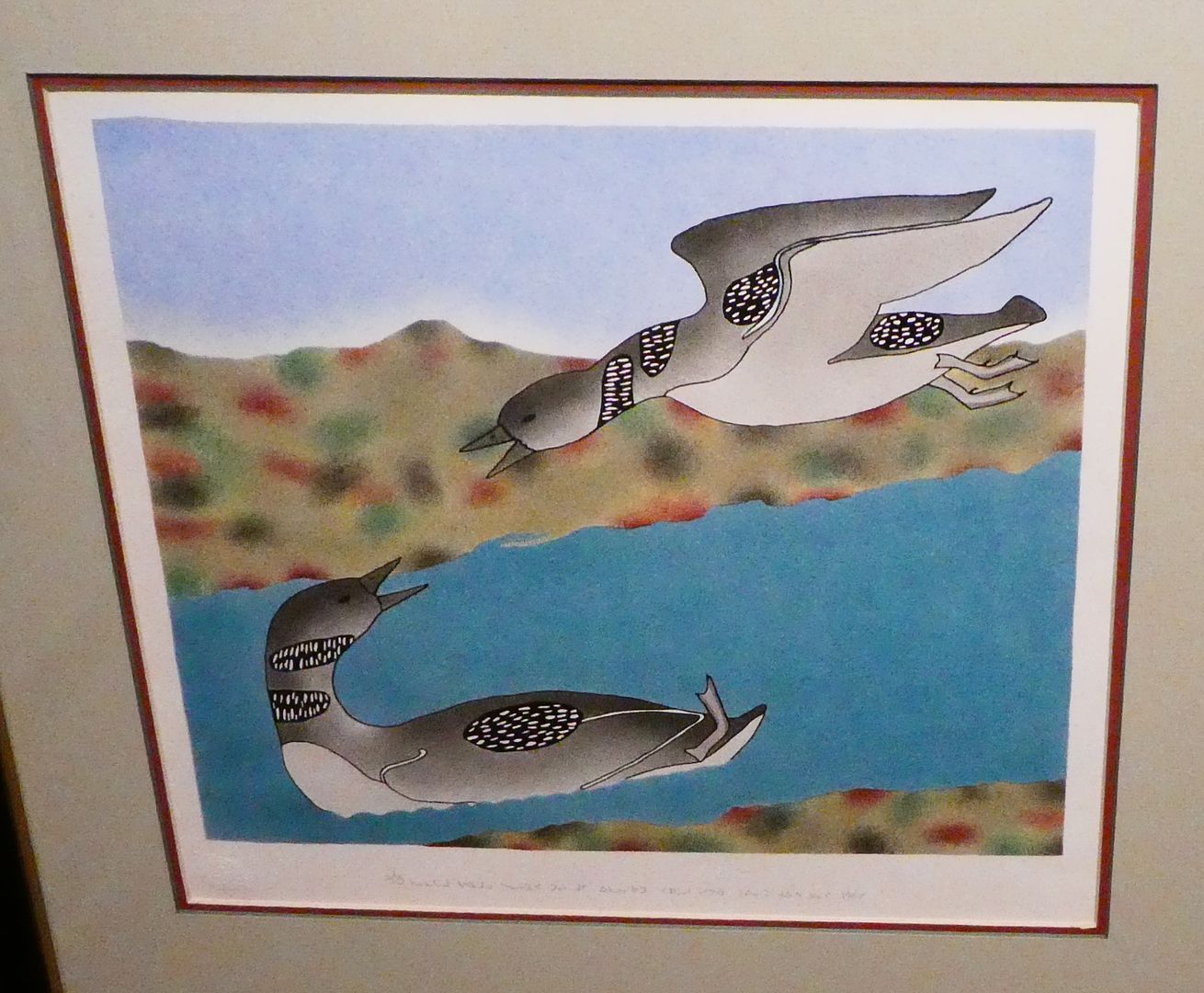 Shown above is Loons Searching in the River for Fish by Paulosie Sivuak (1930-1986) made in 1987 with serigraph and stencil.
Shown above is Loons Searching in the River for Fish by Paulosie Sivuak (1930-1986) made in 1987 with serigraph and stencil.
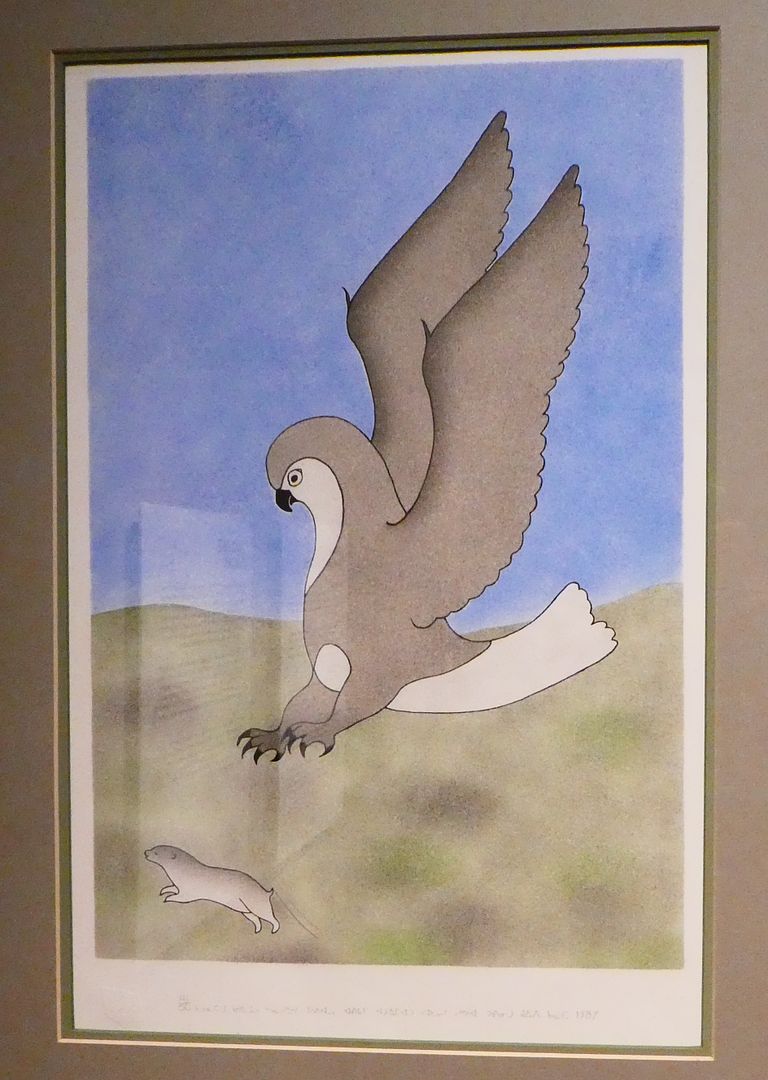 Shown above is An Owl Preys on a Lemming by Paulosie Sivuak (1930-1986) made in 1987 with serigraph and stencil.
Shown above is An Owl Preys on a Lemming by Paulosie Sivuak (1930-1986) made in 1987 with serigraph and stencil.
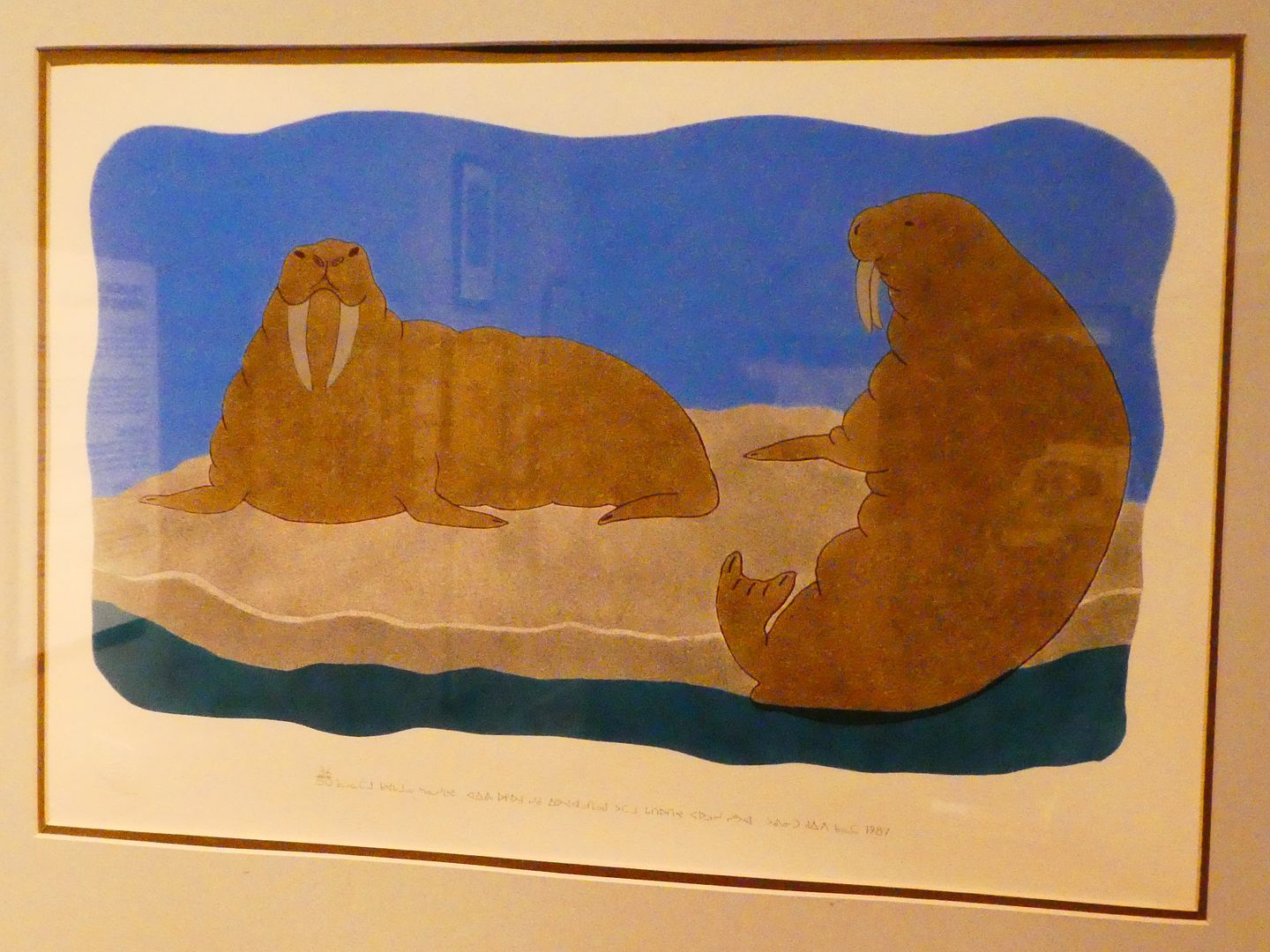 Shown above is Two Walruses Meet on Moving Ice Floe by Paulosie Sivuak (1930-1986) made in 1987 with serigraph and stencil.
Shown above is Two Walruses Meet on Moving Ice Floe by Paulosie Sivuak (1930-1986) made in 1987 with serigraph and stencil.
Indians 101
Indians 101 is a series exploring the North American indigenous cultures, histories, arts, museums, and current concerns. More from this series:
Indians 101: Some Inuit Birds (Art Diary)
Indians 101: Some Inuit Carvings (Art Diary)
Indians 201: Sealth (Seattle), Suquamish/Duwamish Leader
Indians 101: American Indian Beliefs About Ghosts
Indians 201: Mormons and Indians
Indians 101: Plateau Indian Cradleboards (Photo Diary)
Indians 101: Tobacco and the Ho-Chunk
Indians 101: The Ktunaxa Nation (Photo Diary)


